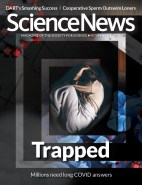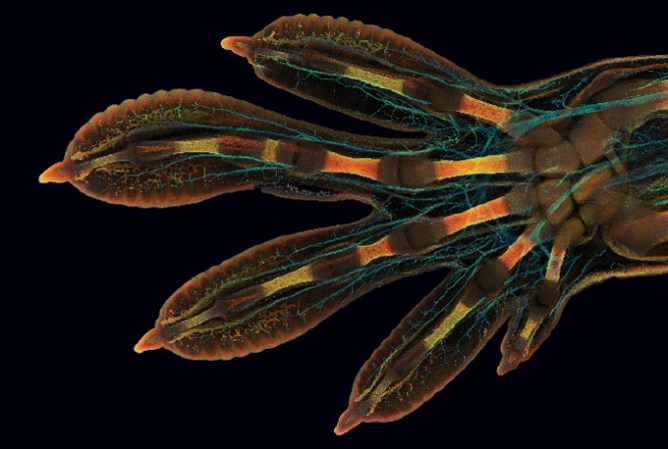Readers discuss swimming sperm, a fishing fox and more
- More than 2 years ago

Against the current
In the race to fertilize an egg, bull sperm that swim in groups travel on a more direct path than sperm traveling alone, James R. Riordon reported in “Sperm in groups outswim loners” (SN: 11/5/22, p. 14).
Given that sperm can’t see where they’re going, reader Donald Bruns wondered how the cells know the way to go.
Sperm make their way to an egg by swimming against a current of mucus that streams through the cervix and away from the uterus. That fluid flows in a thin layer on the surface of the female reproductive tract’s walls, Riordon says. The drag between the head of the sperm and the wall slows the sperm down and swings its tail downstream. This makes the sperm tend to swim into the oncoming current, he says.
Reader Jerry Durkan wondered if sperm in groups reduce resistance by swimming closely behind each other. Known as drafting, the method is popular among cyclists.
“Despite the superficial similarities between groups of sperm and bicycle pelotons, the researchers caution that the parallels don’t run too deep,” Riordon says. “The fluid dynamics that sperm deal with are very different from the ones that cyclists face. Sperm swim upstream, so it’s the fluid that tells them where to go and affects how they bunch, unlike cyclists who follow a preset path that has nothing to do with the surrounding air.”
Resolving rejection
Clusters of human nerve cells called organoids that were implanted into rat brains bloomed and influenced rat behavior, Laura Sanders reported in “Human nerve cells thrive in rat brains” (SN: 11/5/22, p. 6).
Reader Linda Ferrazzara asked how the researchers kept the rat brains from rejecting the human cells.
“Rejection can be a big problem in these sorts of experiments,” Sanders says. “In this case, the researchers used rats that carried a mutation that impaired their immune systems. These immunocompromised rats were less likely to reject the human cells that were implanted in their brains.”
Organoids could one day help treat various human conditions. Many problems, including rejection, still need solving, “but the field is moving fast,” Sanders says. A separate experiment reported last summer got around the rejection problem a different way. Researchers in Tokyo grew an organoid from the healthy colon cells of a patient with ulcerative colitis, a disease marked by inflammation in the gut. The scientists implanted the organoid into the same patient, in hopes that it will help grow more healthy colon tissue and improve the patient’s symptoms.
A prized photo
A peek beneath the scales of a developing gecko’s hand won first place in the 2022 Nikon Small World photomicrography competition, Erin Garcia de Jesús reported in “A glimpse inside a gecko’s hand” (SN: 11/5/22, p. 32). Referencing the Ghostbusters character Egon Spengler, Facebook user Sam Hedemann quipped: “Art Gecko, very nice.”

Catch of the day
In a first, researchers filmed a fox fishing for food, Freda Kreier reported in “A cunning fox catches fish, stunning researchers” (SN: 11/5/22, p. 4).
Reader Doug Miller shared a potential sighting of a fox’s fishy behavior. “We saw a fox with a large fish in his mouth behind the pond that was in back of our house in Illinois. We didn’t see how he got it, but it looked like a freshly caught fish, and the fox looked happy!”
Editor’s note
On November 17, Science retracted the study described in “Signs of Majorana fermion detected” (SN: 8/19/17, p. 8) due in part to “serious irregularities and discrepancies” in the analysis of the raw and published data. Three of the study’s coauthors agree with the retraction, while 14 do not. Two coauthors did not respond, and one is now deceased.